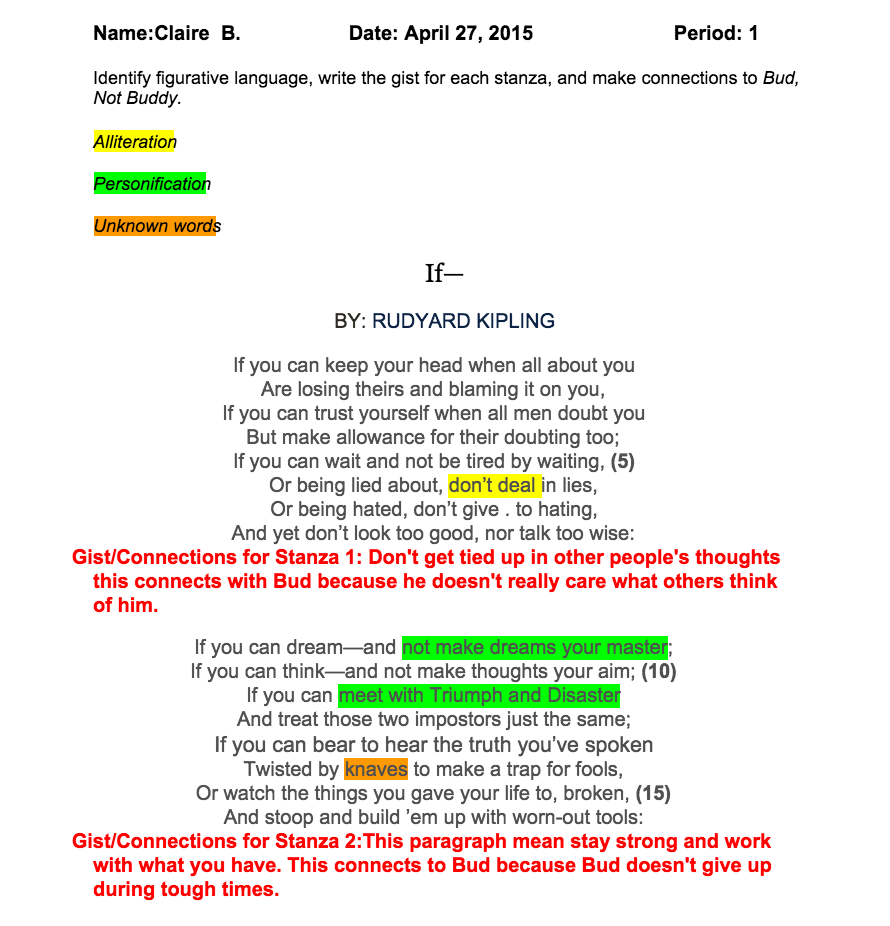We finally wrapped up Bud, Not Buddy by Christopher Paul Curtis! I’ve heard positive reviews from students, and I’m glad they liked the book. With Common Core State Standards, there’s a big push for students to be able to analyze literary and non-fiction texts. When we read The Lightning Thief, students read an excerpt from Joseph Campbell’s The Hero’s Journey, and ended up writing an analysis explaining how Percy Jackson followed the archetype of a hero. With Bud, Not Buddy, we read Steve Jobs’s 2009 Stanford University commencement speech, and compared fictional character Bud Caldwell to Steve Jobs. Students were also required to closely read President Barack Obama’s 2009 back to school speech, answer text-dependent questions, and compare the text with Bud, Not Buddy and the life of Steve Jobs.
Now that we’ve finished our novel, the last part of our unit included reading Rudyard Kipling’s classic poem “If”; while reading the poem, students were asked to identify personification and alliteration, use context clues to define unknown words, and answer four questions about the poem. The last and final element will be for students to list themes found in Bud, Not Buddy and If, and write an analysis comparing the novel and the poem.
I read the poem aloud first, and then we watched two YouTube videos (video A and video B) featuring the poems. I stopped the videos multiple times to ask questions, have students discuss, and make annotations to the text.
Instead of paper, we used iPads this week. I’m a Chromebook kind of girl, but because the laptops were being used for state testing, I couldn’t get my hands on them. Listed below is a student’s work:
 After students finished this assignment, they used the Explain Everything App on iPad to create screencast presentations. The presentations allowed the students to verbally state their reasoning for their answers. Check out a few gems!
After students finished this assignment, they used the Explain Everything App on iPad to create screencast presentations. The presentations allowed the students to verbally state their reasoning for their answers. Check out a few gems!
Great things:
- Students were able to get creative with their presentations.
- NO PAPER 🙂
- Students helped one another with projects.
Next time:
- Allow more time for screencasts. We only had two periods to complete the screencasts, and many students wanted more time.
- Have students type their answers to the questions first to create a script of some sort.
- Remind students to verbally refer to the text when answering questions (we do this with writing, but they forgot to use evidence, or refer to the text, when answering questions; many students drew circles around the area of text they were discussing, and I thought that was acceptable).
- Remind students to state just their first name when recording their screencast (because…you know…COPPA!)


